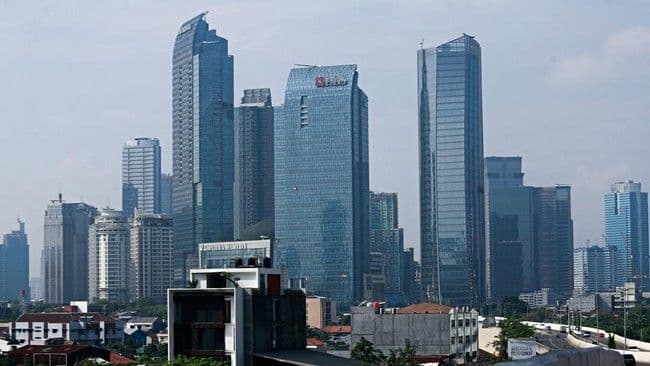Indonesia's Global Index Gambit: Beyond the Rebalance, A Play for Long-Term Growth
Explore MSCI's latest Indonesia index rebalancing. Unpack market reactions, macro signals, and strategic shifts defining Indonesia's investment narrative for global capital.
The Latest MSCI Indonesia Rebalancing: Key Changes and Implications
The recent MSCI rebalancing, effective after the market close on August 26, 2025, has introduced notable shifts within Indonesia's representation in global indices, particularly impacting small and mid-cap segments. Within the core , designed for small to medium capitalization, we observe the addition of Dian Swastatika Sentosa (DSSA) and Petrindo Jaya Kreasi (CUAN), while Alamtri Res Indonesia (ADRO) has been removed. These adjustments reflect 's ongoing assessment of crucial inclusion criteria, including market capitalization, liquidity, and free-float. Simultaneously, the for Indonesia underwent a more extensive reshuffle. New entrants include Adaro Andalan Indonesia (AADI), Alamtri Res Indonesia (ADRO) – marking its re-entry here – MNC Land Tbk (KPIG), Petrosea (PTRO), Raharja Energi Cepu (RATU), and Triputra Agro Persada (TAPG). Conversely, Merdeka Battery Materials (MBMA) and Panin Financial Tbk PT (PNLF) were excluded. These changes are vital as they prompt institutional investors tracking these benchmarks to realign their portfolios, ensuring their holdings accurately mirror the updated index composition.
Market Reactions and Investor Sentiment Post-Rebalance Announcement
The announcement of MSCI rebalancing on August 7, 2025, and its subsequent effective date on August 27, frequently triggers immediate, yet often anticipated, market responses. Typically, shares designated for inclusion experience an upward price movement due to expected 'forced buying' from passive funds, while those marked for exclusion may face selling pressure. For example, analysts had widely predicted 's inclusion, citing its favorable free-float and liquidity, whereas 's entry was considered more marginal, barely meeting the 15% free-float threshold. Interestingly, did not make the cut, primarily due to its free-float falling below the minimum requirement. While some media outlets optimistically reported "massive foreign funds flowing in" and a potential rally for the IHSG, alternative analyses highlighted subdued foreign investor interest in some Indonesian stocks entering the . This divergence underscores the distinction between transient, rebalancing-driven price fluctuations and sustained, confidence-driven capital inflows.
Indonesia's Macroeconomic Resilience: A Shield Against Volatility
Beyond the immediate market reactions and varied investor sentiment triggered by MSCI rebalancing, 's broader economic narrative is characterized by significant macroeconomic resilience. This inherent stability often acts as a crucial buffer against short-term, index-driven market volatility. Recent data from illustrates this strength, with the nation's foreign exchange reserves standing robustly at US$152.0 billion at the end of July 2025. Although a marginal decrease from June's US$152.6 billion, this remains a healthy and substantial buffer, providing critical stability for the Rupiah, which has shown signs of strengthening despite stock market jitters. Furthermore, improving consumer confidence, evidenced by a projected rise in the July 2025 index to 118.4 from 117.8 in June, signals a healthy and expanding domestic demand environment. These fundamental pillars—a stable currency, ample reserves, and resilient consumer sentiment—are instrumental in sustaining 's attractiveness to long-term foreign investors, assuring them of the nation's sound economic foundation, irrespective of transient index adjustments.
Strategic Implications: Shaping Future Capital Flows to Indonesia
The strategic ramifications of 's periodic rebalances extend well beyond daily trading dynamics, serving as critical indicators of 's capital market maturity and its evolving accessibility to global investment. Given that serve as benchmarks for trillions of dollars in both passive and active investments, inclusion or exclusion carries significant weight, acting as a powerful signal to the international investment community. The stringent emphasis on criteria such as free-float and liquidity, as highlighted by discussions around , , and , underscores 's commitment to ensuring that constituent stocks are genuinely investable and liquid. While there might be isolated instances of 'low foreign investor interest' in certain newly added stocks, the overarching trend fostered by these adjustments is increased visibility and deeper integration into global investment portfolios. Each rebalancing, by meticulously refining the index composition, helps direct capital towards companies that adhere to international standards of corporate governance and market efficiency. Ultimately, these strategic realignments contribute significantly to 's long-term objective: to cultivate a deep, liquid, and transparent capital market capable of consistently attracting diversified, high-quality foreign capital, thereby solidifying its position as a compelling long-term investment destination on the global stage.
Related Articles

Indonesia's Growth Paradox: Unpacking the Surprise 5.12% Amidst Persistent Headwinds

Indonesia's Growth Paradox: Unpacking the Surprise 5.12% Amidst Persistent Headwinds

Navigating the Storm: Indonesia & Malaysia's Bold Play for Palm Oil Sovereignty

Navigating the Storm: Indonesia & Malaysia's Bold Play for Palm Oil Sovereignty

The Industrial Barometer: IHI's Stock Correction and the Unseen Forces Shaping Its Next Chapter

The Industrial Barometer: IHI's Stock Correction and the Unseen Forces Shaping Its Next Chapter

The AEX Puzzle: Why Local Optimism Clashes with Global Peaks
